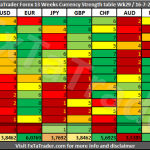The global investing world across asset classes was caught off guard recently by the Chinese market rout. The world’s second-largest economy was completely derailed the market in August after China devalued its currency yuan by 2%, to presumably maintain export competitiveness and revealed a six-and-a-half-year low manufacturing data for the month.
The tumult in global equities, currencies and commodities suddenly perked up the safe haven appeal of the market. While this risk-off trade sentiment among investors went against most asset classes, a downtrodden defensive sector – utility – cashed in on (slightly) this debacle.
Investors should note that the U.S. economy is primed for a rate hike sometime later in 2015 after nine long years. Several U.S. economic data released lately were upbeat, supporting the case for an imminent rate hike. Quite expectedly, this phenomenon should weigh on rate sensitive sectors like utilities and REIT.
These sectors need a high level of debt for operations and approach the capital markets for raising funds. As a result, a rising rate environment is a downright negative for these areas. While the utility sector suffered from the looming rate hike worries in the last few months, REITs seem less ruffled by this threat.
Broader utility ETF Utilities Select Sector SPDR (XLU) is down over 13% in the year-to-date frame while Vanguard REIT ETF (VNQ – ETF report) has lost about 11%. This was probably because a healthy economy and busy activities helped the REIT space weather the rate hike worries to a large extent (read: REIT ETFs Worth a Look On Bullish SPG, VTR Earnings).
However, investors should note that the retreat in VNQ was steeper in the last one-month frame compared to XLU. In the said period, XLU was down about 6% while VNQ shed 7.9% (as of September 4, 2015). Let’s take a look at what’s giving utilities a slight edge over REITs?
Safe Haven & Cheaper Valuation Win; Rate Sensitivity Loses
The downward drift in utilities decelerated in recent times as these can be attractive in a choppy market like this. This sector is less volatile in nature and relatively immune to the market peaks and troughs. If this was not enough, the space is less exposed to a stronger dollar due to the lack of foreign coverage. Rather lower commodity prices amid the strengthening greenback will help lower the input costs of the utility companies (read: Protect Your Portfolio with These Utility ETFs).
Investors should also note that long-term interest rates have been on a downhill ride post China currency episode. Yield on 10-year Treasury note fell to 2.13% (as of September 4, 2015) from 2.24% on August 10. If this was not enough, U.S. job numbers in August grew at the most sluggish pace in 5 months and fell short of analysts’ expectations.
As per several market participants, the China issues and the latest setback on the job front have silenced the growing buzz about the likely Fed rate hike as early as this month to some extent. This played yet a big role in bringing down the Treasury yields (read: U.S. Treasury ETFs Rise on Yuan Devaluation).












Leave A Comment